1920: VOTES FOR WOMEN!
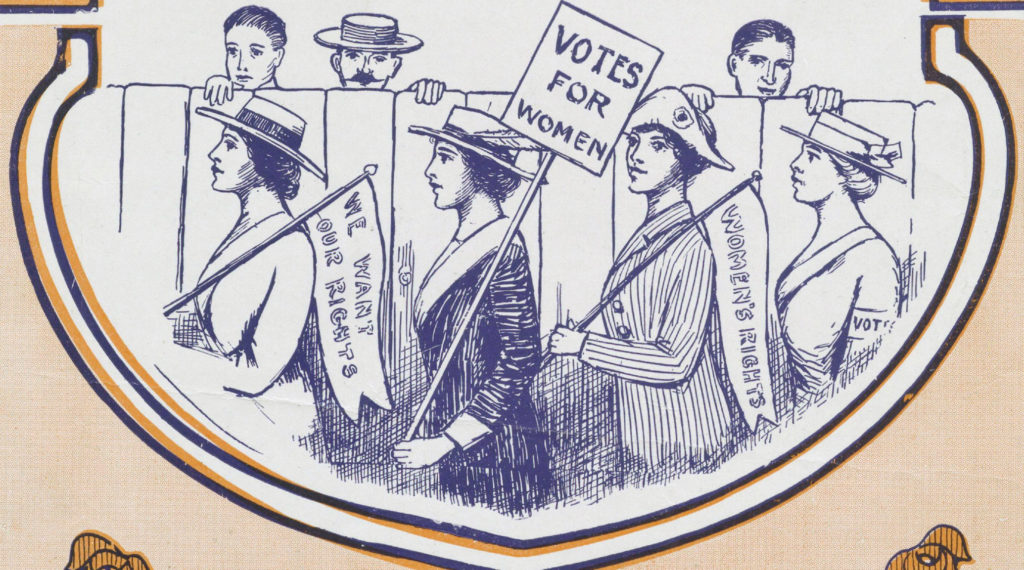
Every four years, United States citizens vote for a new president. Voting for our country’s leader is important. The United States is a democracy. In a democracy a country’s citizens elect its leaders.
For a very long time, though, women were not allowed to vote. They couldn’t vote for who they wanted as president.
Women fought for a long time to get their right to vote. They wanted suffrage. Suffrage means the right to vote in political elections.
They tried persuasion. They gave speeches about why women should be able to vote. They marched in parades to bring attention to their cause. They got angry and protested. Some women were arrested for protesting. They went to jail.
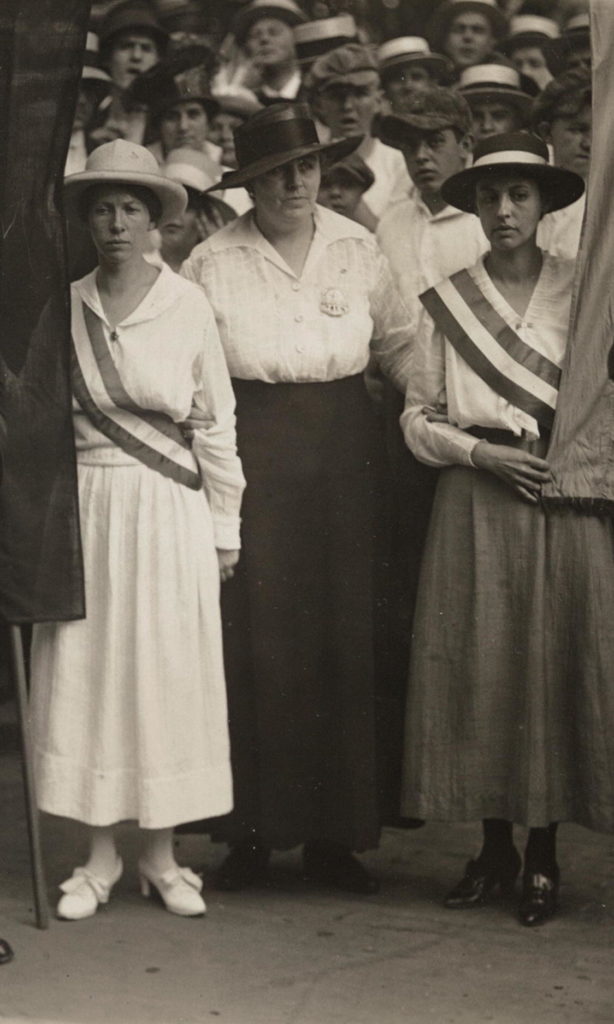
Suffragist Catherine Flanagan of Hartford (left) was arrested for protesting for the right to vote. August 1917. Library of Congress
It might surprise you, but some women didn’t think women needed to vote! In a democracy, not everyone agrees. People are elected and laws are passed when more people vote for than against a candidate or a law.
One hundred years ago, attitudes were finally changing. More people agreed women should be allowed to vote. In 1919 Congress passed the 19th Amendment to the U.S. Constitution. The new amendment said a person couldn’t be denied the right to vote because of their sex.
But it wasn’t the law yet. There was a second step. Thirty-six states had to also approve the amendment. Finally, in August 1920, 36 states had approved the amendment. The November 1920 presidential was the first in which women in Connecticut could vote for president.
The Hard Fight for the Right to Vote
Elsie Hill and Helena Hill Weed were sisters. They were from Norwalk. Helena was a geologist. Elsie was a French teacher. The sisters believed women should have the right to vote. Their father was Ebenezer Hill. He was a U. S. Congressman. He represented Connecticut’s 4th District. He was against women voting. But his daughters changed his mind. Sadly he died in 1917 before he could help change the constitution.
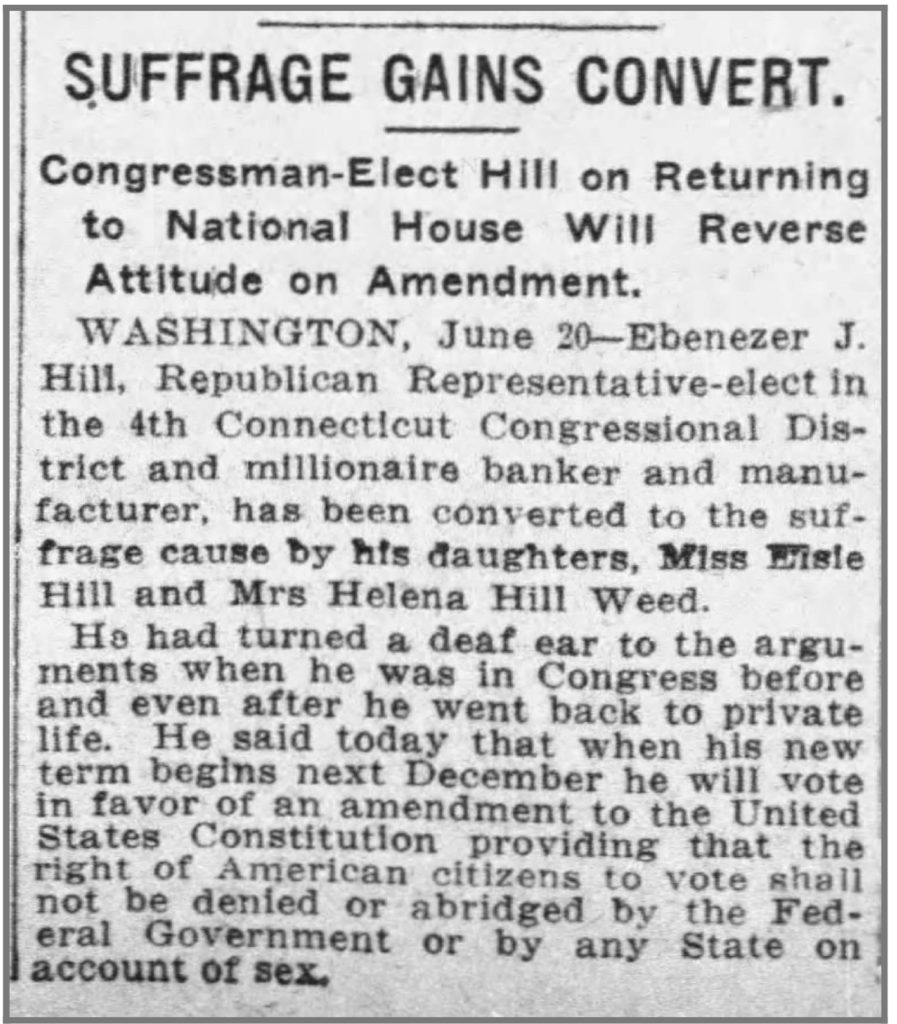
Boston Globe, June 21, 1915
Elsie and Helena continued their fight for the vote. Elsie was arrested and sent to jail in 1919. She was arrested when she protested in front of President Woodrow Wilson. Helena was arrested and sent to jail, too. She was arrested while protesting in front of the White House. Helena carried a poster that said, “Governments derive their just powers from the consent of the governed.” That means government get its power from the people. Helena felt that meant ALL of the people. Eight other women from Connecticut were arrested while protesting the right to vote, too.
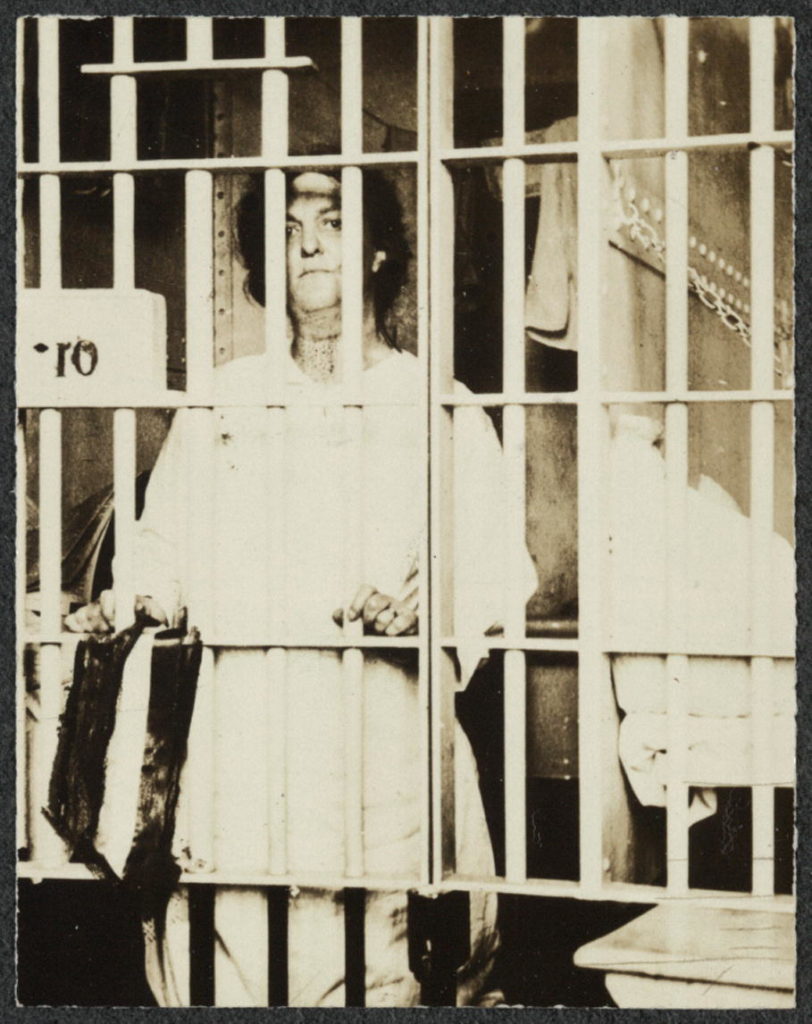
Helena Hill Weed was jailed for protesting in front of the White House. Library of Congress
Fighting for the Vote in Connecticut
Hartford’s Mary Townsend Seymour was like many Black women. She worked to improve the lives of people in her community. She helped found the Hartford chapter of the NAACP. The NAACP was founded to bring white and Black people together for civil rights. Seymour fought for women’s right to vote, too. On March 10, 1919, she spoke at a women’s suffrage rally at Hartford’s train station.
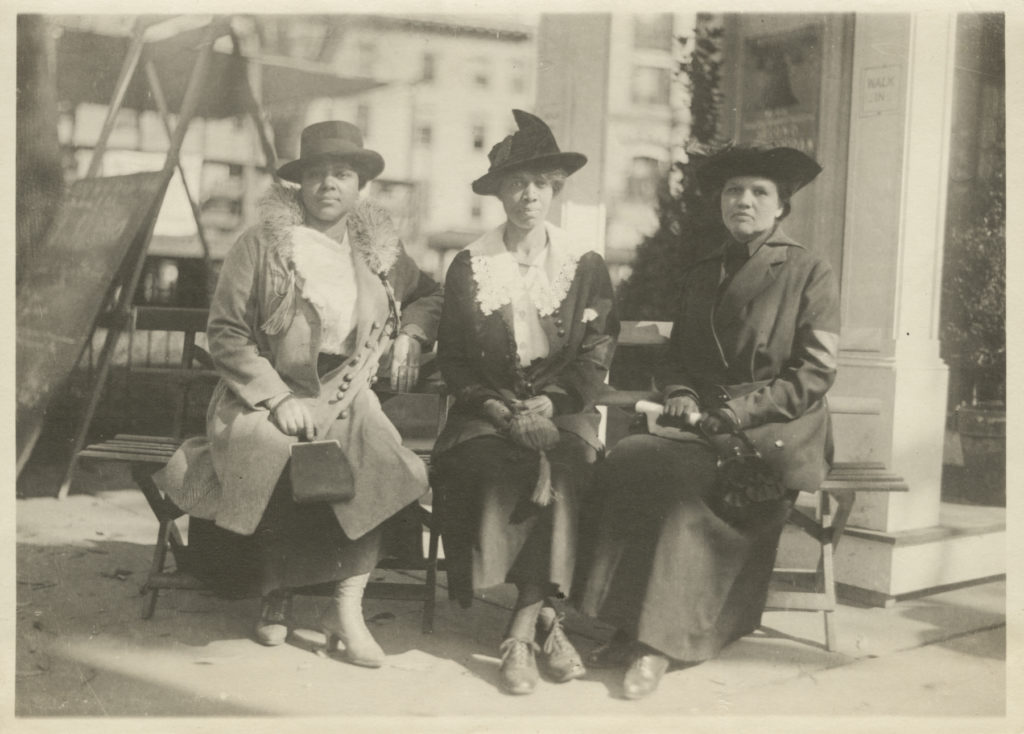
Mary A. Johnson (center) fought for the right to vote, ran for office, and held important positions in organizations in Hartford. She is seated between Elizabeth R. Morris (left) and Rosa J. Fisher (right). State Archives, Connecticut State Library
Mary A. Johnson had a long career in local politics. She was a business owner. She and her husband ran the Johnson and Johnson Funeral Home. In 1918 she was the leader of the Colored Republican Women of Connecticut. In 1929 she became a member of the Mayor’s Committee on Unemployment. In 1948 she ran for the State House of Representatives. She ran as a member of the People’s Party, though she did not win. Throughout her life, she did many things as a leader in her community.
From Voting to Governing
After suffragists used their words and actions to win the right to vote, they didn’t stop there! They ran for office. Mary Townsend Seymour ran for state office in 1920, but she did not win. In November 1920, five women were elected to Connecticut’s General Assembly.
Maria Colon Sanchez was born in Puerto Rico in 1926. As a young woman, she came to Connecticut. She eventually opened a small store in Hartford. She listened to her customers. She decided she could help her community, her city, and her state. She ran for the Hartford Board of Education in 1973. She was elected to the Connecticut General Assembly in 1988. She was the first Latina elected to the Connecticut General Assembly. Read more about her on pages 40 and 41 of Where I Live: Connecticut.
Ella B. Grasso was the first woman elected as Connecticut’s governor. She was elected in 1975. She was the daughter of immigrants. Her parents came to the United States from Italy in the early 1900s. She was one of our most popular governors.
In November 2020, the nation elected the first woman, and first woman of color, as vice president. Vice President Kamala Harris promised that she might be the first but she won’t be the last!
Enrichment Activities
Voting Map
Find Connecticut on this map. What does it tell you about women’s right to vote in Connecticut?
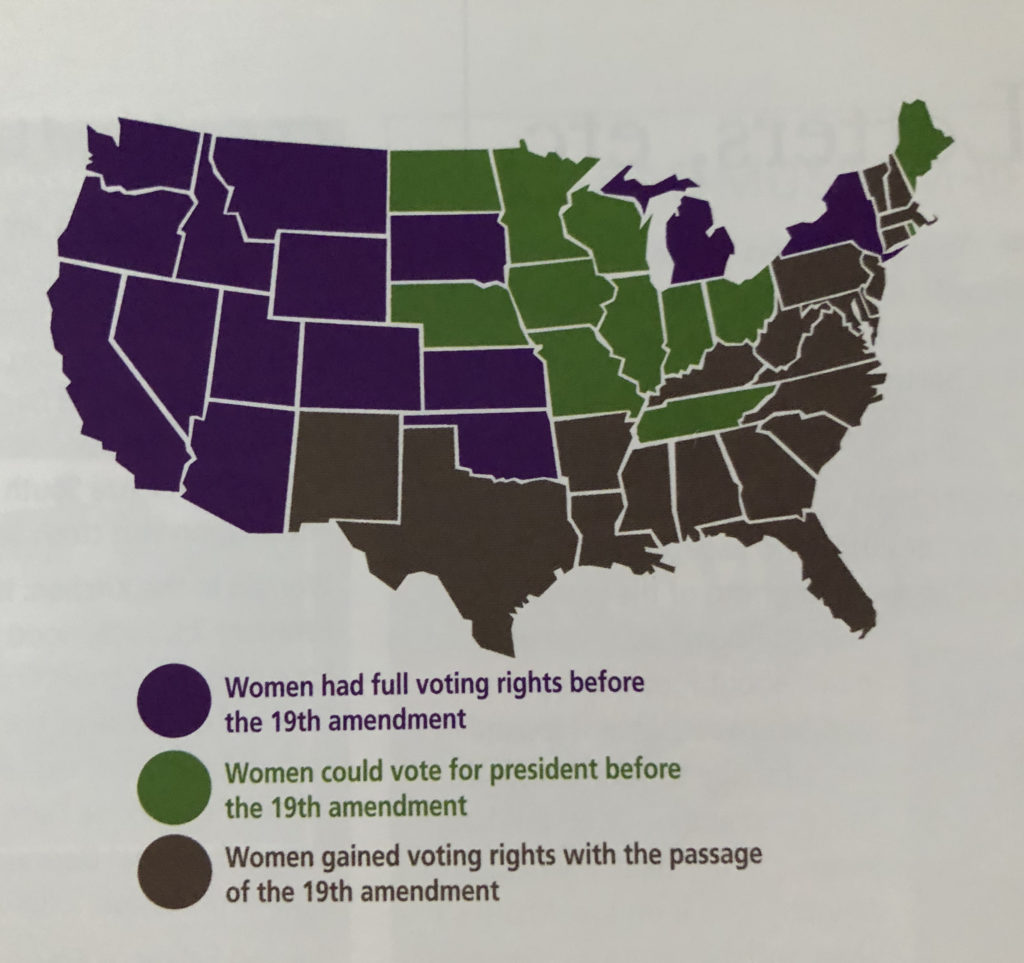
(c) Connecticut Explored Inc.
Who Can Vote in Connecticut?
-
Will you be 18 before Election Day?
-
Are you a United States citizen living in Connecticut?
-
If you have been convicted of a crime that is a felony, have you completed your sentence and parole?
If you can answer yes to all three of these questions, you are eligible to register to vote in Connecticut.
Source: Secretary of the State’s website






